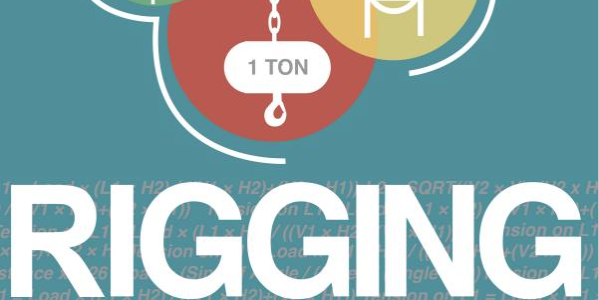When: July 22-23 from 10am-6pm
1 Day: $175
2 Day: $250
There has been a recent explosion in aerial rigging. Unfortunately, most riggers (and often performers who do their own rigging) do not understand the tremendous loads that can be generated by performers on certain apparatus. This one or two-day workshop begins by measuring the actual shockloads produced by aerial performers (we use a set up a sophisticated load cell to measure these loads). Next, we discuss and demonstrate how to rig for these types of dynamic loads. Some of the topics covered in these seminars include:
–Understanding dynamic loads (resultant forces)
–Mechanical advantage
–Rigging hardware
–Tying knots and making eye splices
–Aerial apparatus and how they are rigged
–Guying techniques
–Fall protection
What every aerialist should know about rigging!
Delbert Hall is the President and Chief Operating Officer of D2 Flying Effects a company that specializes in rigging opjects and artists of all kinds. Delbert has over 30 years of experience flying performers. He is experienced in all areas of performer flying, from system design to devising elaborate flying choreography. Delbert is an ETCP Certifed Rigger (Theatre) and Trainer and professor of theatre at East Tennessee State University.
Certified Riggers can receive ETCP credits for attending!
This workshop will be a very condensed and intensive curriculum.
Outline:
I. Things fail because the force is greater than the breaking strength that the material
— A. What is the force?
— — 1. Static forces
— — 2. Dynamic forces
— — — a. Shock loads
— — — b. Centrifugal forces
— — — c. Measuring dynamic forces with a load cell (when possible)
— B. What is the breaking strength?
— — 1. Hardware
— — 2. Ropes
— — 3. Fabrics
— — 4. Steel and aluminum
— C. Design factors
— D. Understanding and inspecting structures
— E. How to rig points
— — 1. Metal structures
— — — a. I–beams
— — — b. Open web truss
— — — c. Box truss
— — — d. Working in a theatre (pipe battens)
— — — e. Other
— — — f. Rigging exercises (when possible)
— — 2. Wood structures
— — — a. Beams
— — — b. Truss
— — — c. Trees
— — — d. Other
— — — e. Rigging exercises (when possible)
— F. Other rigging Topics
— — 1. Making/purchasing equipment
— — 2. Finding and working with a rigger
— — 3. Insurance
— — 4. Other
For workshop content questions, contact Delbert Hall at halld@etsu.edu . For registration and payment questions, contact Sky Gym at (404) 309-9696 or dance@theskygym.com

